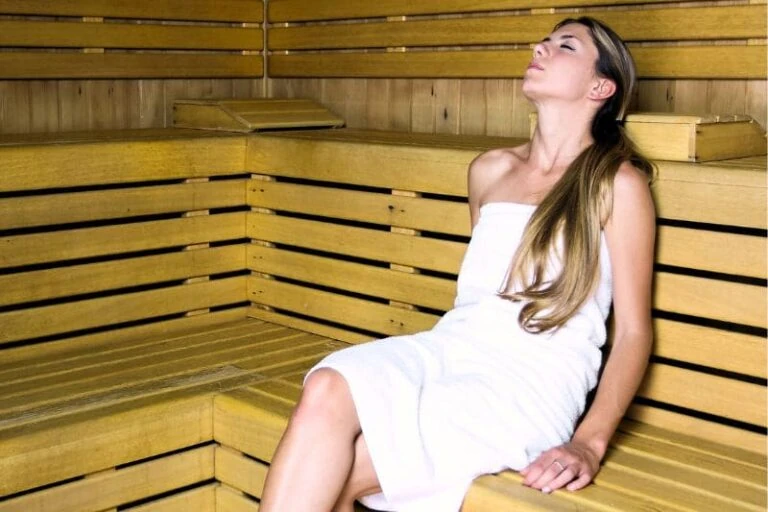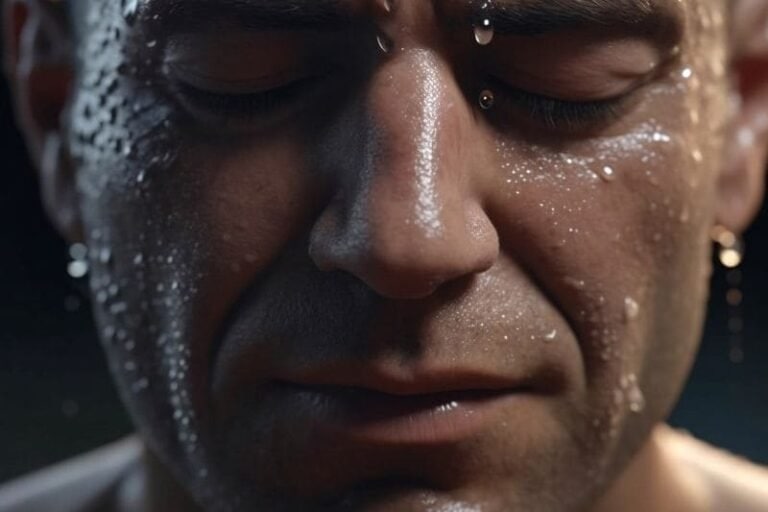Pouring Water on Sauna Rocks: Everything You Want to Know

“The sauna is not a luxury, but a necessity,” said Finnish author Maila Talvio. Many sauna fans know the art of löylynheitto. This is the act of pouring water on hot sauna rocks.
Finnish-style saunas use lava rocks to spread heat evenly. This makes them great for chilling out and staying healthy. Pouring water on these rocks is more than a habit; it’s a science that makes the sauna better.
Key Takeaways
- Löylynheitto is the Finnish technique of pouring water on sauna rocks
- Proper sauna etiquette involves using the right amount of water
- Sauna rocks serve a functional purpose beyond decoration
- Water temperature affects the intensity of steam (löyly) produced
- Understanding this practice enhances overall sauna wellness benefits
Learning how to pour water on sauna rocks is key to being polite and safe in the sauna. In Finnish saunas, this method spreads heat around and warms the air. Experts recommend using 3 to 6 ounces of water each time.
This guide is for everyone, whether you’re new to saunas or have been going for years. It will teach you how to pour water on sauna rocks like a pro. We’ll look into the history, safety, science, and everything you want to know about pouring water on sauna rocks.
Table of Contents
The Tradition and Purpose of Pouring Water on Sauna Rocks
Pouring water on sauna rocks is a key part of Finnish sauna traditions. This act creates löyly, the steam that comes from hot stones. Let’s look into why this custom is important.
Historical Origins of the Practice
Finnish sauna culture goes way back; used for cleaning, relaxing, and staying healthy. Archaeologists found early sauna houses from 4000BC – 10000BC on the Orkney Islands. This shows how long this tradition has been around.
Related: Sauna History
Creating Löyly: The Essence of Sauna Steam
Löyly, the steam from sauna rocks is key to a real sauna experience. When water hits the hot stones, it turns into steam right away. This makes the air more humid, which is good for the skin and helps clean the body.
Enhancing the Sauna Experience through Humidity Control
Adding water to sauna rocks lets people control the humidity and heat. Most people like wet saunas better, with temperatures around 190 degrees Fahrenheit and humidity of 10-15%. This makes sauna use popular and effective.
| Sauna Type | Preference | Average Temperature | Ideal Humidity |
|---|---|---|---|
| Wet Sauna | 70% | 190°F | 10-15% |
| Dry Sauna | 30% | Varies | Below 10% |
To make sauna time even better, you can add essential oils to the water. Eucalyptus clears sinuses, lavender helps you relax, and pine or cedarwood gives a natural smell. These extras make the sauna experience more personal and fun.

Pouring Water on Sauna Rocks: Techniques and Best Practices
Learning how to use a sauna safely is key. Always use clean water, like tap or distilled, to avoid harmful fumes. A wooden bucket with a ladle is the best way to pour water on electric heaters.
To make great steam, pour just a little water—about half a cup—on the rocks. This keeps the steam right and stops electrical problems.
It’s important to keep your sauna in good shape. Vacuum the heating parts every three months and wash the rocks with mild soap every six months. This keeps the water clean and safe.
Choose rocks like basalt or granite for your sauna. They can handle high heat and quick changes well. Rocks that are 2 to 6 inches big are just right for storing heat and making steam.
Have a pro check your sauna every year to keep it safe and working well. This catches problems early and saves money. Using the right techniques and regular checks makes sauna time better.
GRAB YOUR “FREE” SAUNA E-BOOK NOW!
“Become a Sauna Expert Overnight!”

Sauna Rocks: Types, Selection, and Placement
Sauna rocks are key to a great sauna experience. Choosing the right rocks and where to put them helps with heat and steam. Let’s look at the best rocks for saunas and how to keep them in good shape.
Choosing the Right Rocks for Your Sauna
There are many types of sauna rocks. Basalt, granite, olivine, jade, and quartz are top picks. Each type has its own benefits:
- Basalt rocks keep heat well
- Granite is durable and keeps heat for a long time
- Olivine is great for heat and looks nice
- Jadeite rocks clean the air, making it healthier
- Quartz spreads heat evenly and adds luxury
The size of sauna rocks is important, too. Rocks the size of a softball to a golf ball work best for heat and steam. Smaller rocks heat up fast, while bigger ones hold heat longer.
| Rock Type | Heat Retention | Durability | Special Features |
|---|---|---|---|
| Basalt | Excellent | Good | Fast heating |
| Granite | Very Good | Excellent | Long-lasting heat |
| Olivine | Excellent | Good | Elegant appearance |
| Jade | Good | Very Good | Air ionization |
| Quartz | Very Good | Excellent | Even heat distribution |

Proper Placement for Optimal Heat Distribution
Putting sauna rocks in the right spot is key for even heat and safety. Put them above the heating element and make sure air can move freely. The shape of the rocks affects how much steam they make:
- Rounded stones make steam that’s gentle and lasts a while
- Split-faced stones create strong steam bursts
Maintenance and Replacement of Sauna Stones
Keeping sauna stones clean is important for them to work well. Wash them before use to get rid of dirt and bad smells. Check your sauna rocks often for damage and turn them so they wear out evenly.
Sauna rocks don’t last forever. Some can break down in less than a year, especially near the fire pot because of heat changes. Replace any broken or small rocks to keep your sauna working right.
The Physics Behind Sauna Heating and Steam Generation
Sauna heating systems use complex physics to create a perfect place for relaxation. Knowing these principles can make your sauna time better. It helps you enjoy your sessions more.
Heat Transfer and Storage in Sauna Rocks
Sauna rocks are key in heating up the sauna. They soak up and hold heat from the heating system. Then, they slowly release it to keep the sauna warm.
When water is poured on these hot rocks, it turns into steam fast.
Vaporization Process and Its Effects on Sauna Temperature
The way water turns to steam changes sauna temperatures. When water hits the rocks at 100°C, it turns into steam. This happens even if the sauna is cooler.
This steam spreads heat all over the sauna. It changes the air temperature and humidity. At 158°F with 25% humidity, the dew point can hit 106°F.
Related: Ways to increase the sauna temperature
The Role of Rocks in Even Heat Distribution
Sauna rocks help spread heat evenly. Turning the rocks often makes sure the heat is the same everywhere in the sauna room. This stops some rocks from getting much hotter than others.
This makes the sauna better and energy efficient.
Knowing these physics can improve sauna time. By controlling water and rocks, you can keep the sauna just right, making sessions more fun and effective.
Related: Why is the sauna not heating up

Discovering the Aufguss Ritual: A Transformative Sauna Experience
The aufguss ritual takes sauna bathing to another level. Originating from Germany, this practice involves a sauna master (aufgussmeister) pouring water mixed with essential oils over hot sauna rocks. But it doesn’t stop there.
In an aufguss session, the sauna master uses a towel to circulate the aromatic steam. This creates an intense wave of heat and fragrance, enhancing the sauna’s therapeutic effects. Each session is unique, with different essential oils chosen for their specific benefits, from relaxation to invigoration.
Bringing the aufguss ritual into your sauna time can totally change how you feel, making every session a mix of deep relaxation and refreshing energy.
Conclusion
Pouring water on sauna rocks is a tradition that makes sauna time better. This act, called creating löyly, lets users control the humidity and heat. It makes the sauna more relaxing and beneficial.
Adding aromatherapy by mixing essential oils with water can make you even more relaxed.
But, it’s key to use saunas safely. Don’t pour too much water on the rocks, as it can make it hard to breathe.
In the end, pouring water on sauna rocks mixes tradition with science. Whether you want to relax or get healthier, knowing and doing this right can make your sauna time much better.
FAQs About Pouring Water on Sauna Rocks
Can I put water on my sauna rocks?
Yes, you can put water on sauna rocks to create steam and increase humidity. This practice, known as “löyly” in Finnish saunas, enhances the sauna experience by making the heat feel more intense.
Does pouring water on the sauna make it hotter?
Pouring water on sauna rocks increases the humidity but doesn’t raise the actual temperature. The steam makes the air feel hotter and more intense.
What to put on sauna rocks?
Only use clean water on sauna rocks. You can also add a few drops of essential oils to the water for a fragrant experience, but be cautious not to use oils directly on the rocks as they can cause damage.
How often should you change sauna rocks?
Sauna rocks should be changed every 1-2 years, depending on usage. Frequent use or visible signs of wear, like cracks, indicate it’s time for replacement.
How do beginners use a sauna with rocks?
Begin by preheating the sauna to your desired temperature. Pour small amounts of water on the rocks to create steam, sit on a bench, and relax. Start with short sessions and gradually increase the time as you get comfortable.
How long do sauna rocks take to heat up?
Sauna rocks typically take about 30-45 minutes to heat up properly. This time ensures they reach a temperature that can effectively produce steam when water is poured over them.

“Become a Sauna Expert Overnight!”
Grab Your “FREE” Sauna E-book NOW!
Get your hands on the ultimate sauna manual. From history to DIY setups, our free guide has it all.

As a Chartered Accountant turned sauna enthusiast, I bring a unique blend of analytical skills and hands-on experience to the world of heat therapy. With over a decade dedicated to researching and testing sauna products and practices, I’ve developed a deep understanding of this field. A the founder of HomeInDepth.com, I provide reliable, easy-to-understand information on all aspects of saunas. My goal is to guide you through every step of your sauna journey, offering meticulously researched, unbiased advice to help you make informed decisions and create your perfect sauna experience. I’m always happy to hear from sauna lovers like you—feel free to leave questions or share your own tips in the comments below so we can learn together. Contact me on:







9 Comments